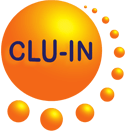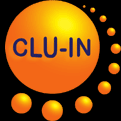Search Result from the September 2011 Issue
| Return to Search | Return to Results |
FIRST USE IN THE UK OF FULL-SCALE IN SITU SURFACTANT-ENHANCED RECOVERY WITHIN AN AQUIFER IMPACTED BY TRICHLOROBENZENEBaldock, J., P. Crowcroft, A. Peacock, Z. Gillingham, A. Sykes, A. Thomas, J. Teer, M. Klabun, and R. Timson. Seventh International Conference on Remediation of Chlorinated and Recalcitrant Compounds (Monterey, CA; May 2010). Battelle Press, Columbus, OH. ISBN: 978-0-9819730-2-9, Paper E-042, 4 pp, 2010
Potential trichlorobenzene (TCB) DNAPL source zones were identified at a
1.9-ha dye works site within the underlying heterogeneous clay, silt, sand,
and gravel aquifer. The aquifer is in hydraulic continuity with an adjacent
river. Following the completion of lab tests confirming potential
applicability, a full-scale surfactant-enhanced recovery system was installed
to address DNAPL and dissolved-phase constituents in groundwater. Operation
was implemented within a relatively short period, between July 2008 and
February 2009. The system is believed to be the first full-scale
surfactant-enhanced recovery project undertaken within an aquifer in the
United Kingdom. Twenty-three injection/extraction wells installed across an
area of ~800 sq m delivered a mixture of two commercially available
surfactants either under pressure or via gravity drainage, depending on
subsurface permeability. The source zone was subdivided into 5 cells of 4 to 5
wells each and targeted with four flushes of surfactant, each with a defined
contact time. Whilst one cell was under injection, another would be extracted,
with the remainder in contact. Contact time, optimized in lab tests, was
critical to success. Extraction for aboveground treatment took place after 7
days of equilibration and mobilization of the chlorinated benzenes. To
minimize the risk of contaminant migration away from the treatment zone,
injection and extraction were conducted simultaneously to maintain a neutral
water balance within the aquifer. This process was repeated for 3 months, with
surfactant recycling, until TCB concentrations reached baseline within each
well. The operation involved injection of 1,000 m3 of surfactant solution,
extraction of >7,000 m3 of groundwater, and treatment in a system comprising
groundwater influent tanks, sediment filters, a photocatalytic UV reactor, and
liquid-phase carbon filters. This effort recovered ~2,650 kg of contaminants.
The project also developed an analytical method that enabled concentrations of
TCB and DCB to be determined in the presence of surfactants, a process not
available in external commercial laboratories in the UK. As a polishing step,
a total of 3,030 m3 of emulsified vegetable oil was injected to encourage
further reduction of residual contamination via anaerobic degradation.
Additionally, a zero-valent iron permeable reactive barrier was installed at
the base of the river.
The Technology Innovation News Survey welcomes your comments and
suggestions, as well as information about errors for correction. Please
contact Michael Adam of the U.S. EPA Office of Superfund and Emergency Management at adam.michael@epa.gov or (703) 603-9915
with any comments, suggestions, or corrections.
Mention of non-EPA documents, presentations, or papers does not constitute a U.S. EPA endorsement of their contents, only an acknowledgment that they exist and may be relevant to the Technology Innovation News Survey audience.




